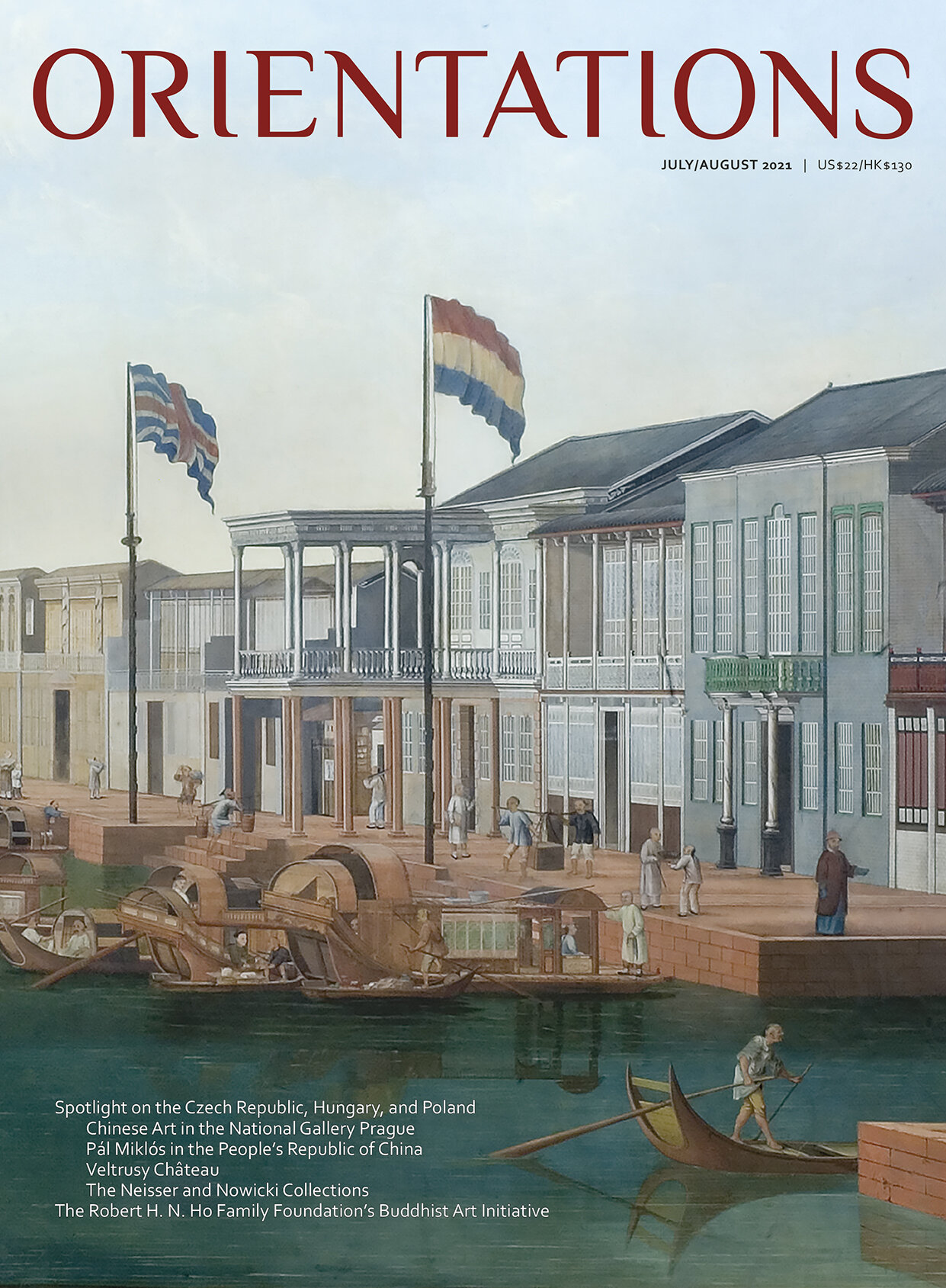JUL/AUG 2021
VOLUME 52 - NUMBER 4
I first met Michaela Pejčochová, a Czech scholar specializing in Chinese art and the theory of art in China and curator at the National Gallery Prague, during the Museum Summit in Hong Kong at the end of 2019 where she presented a paper on Asian art collections in central Europe. It gave me the idea of devoting one issue per year to highlighting collections and institutions in a particular region in the world. We begin with a journey through the Czech Republic, Hungary, and Poland with Michaela as our guest editor. Her article gives an overview of collecting and exhibiting Chinese art in central Europe starting with the collections of the emperor Rudolf II in Prague and the archduke Ferdinand II in Ambras, Austria.
Pál Miklós was a Hungarian sinologist and prolific author on a wide variety of subjects, from the Buddhist art in Dunhuang to the works of modern Chinese ink painting master Qi Baishi. Györgyi Fajcsák focuses on his connections with contemporary Chinese painters in the early 1950s while he was a student in China and how those relationships influenced his later research.
We include two articles on the ‘Chinese vogue’ in Poland in the second half of the 17th century; notably, a considerable amount of literature on China was available in Europe under the reign of Stanislaus Augustus (r. 1764–95), which may have spurred the increasing interest. Izabela Kopania looks at Chinese rooms in the Wilanów Palace, Royal Łazienki Museum, and Łańcut Castle, while Magdalena Kozar extends the discussion of chinoiserie in European applied art in the 17th and 18th centuries by looking at the Neisser and Nowicki collections, two collections of Chinese art in Wrocław.
The second part of this issue celebrates projects supported by the Buddhist Art Initiative of The Robert H. N. Ho Family Foundation. Articles by Anita Chung, Johannes Beltz, Markéta Hánová, and Debra Diamond highlight development trends, shared concerns, and adopted solutions, especially during this period where it is more important than ever to build connections with the audience and each other through art and culture.
While the majority of us are still facing travel restrictions of one form or other, I hope this issue will take you on an armchair voyage through time and space to this region of Eastern Europe.
FEATURES
Michaela Pejčochová. Stones from Other Mountains: Collecting and Exhibiting Chinese Art in Central Europe, from Rudolph II to the Communist Era.
Györgyi Fajcsák. A Hungarian Sinologist in the People’s Republic of China: Pál Miklós and His Connections with Chinese Contemporary Artists in the Early 1950s
Barbora Bartyzalová. The Island Chateau— A Touch of Asia in the Heart of Europe
Magdalena Kozar. Discovering Chinese Art in Wrocław—Insights from the Neisser and Nowicki Collections
Izabela Kopania. Looking West and Dreaming East—Chinese Taste at the Eastern Borders of Europe from 1696 to 1821
Johannes Beltz. Next Stop, Nirvana? Measuring the Success, Impact, and Sustainability of a Buddhist Art Exhibition
Markéta Hánová. An Encounter with the Buddha in Prague: New Perspectives and Challenges
Anita Chung. Buddhist Art Initiative: Connectivity as a Driver for Change
PREVIEWS & REVIEWS
Debra Diamond. 'Encountering the Buddha: Art and Practice Across Asia’
Shivani Sud. ‘Perspectives of/from India in Salem: The Peabody Essex Museum’s Indian Art Galleries’
Susan Conway. Textiles in Burman Culture by Sylvia Fraser-Lu

